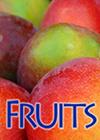Dietary diversity associated with different enset [Ensete ventricosum (Welw.) Cheesman]-based production systems in Ethiopia
IF 0.5
4区 农林科学
Q4 HORTICULTURE
引用次数: 10
Abstract
Introduction - A large diversity of enset-based production systems exists in Ethiopia. Enset is cultivated in combination with multipurpose trees, coffee, vegetables (kale), root and tuber crops, and various cereals. In combination with roots and tubers, the cultivation of enset supports some of the most densely populated rural areas of Ethiopia. Problem statement - Enset is a starchy staple crop, high in carbohydrates, but low in vitamins and protein content. When enough enset plants are available on a farm, poor households do not go hungry, but their diets lack some essential nutrients. In general, most enset-based households can have a balanced diet, if they are able to supplement enset with protein from legumes and/or animal products. However, the very poor households tend to fall back on kocho, bean sauce, cabbage and taro, with little daily variation and low dietary diversity throughout the year. Recommendations - Sustainable intensification and diversification efforts are urgently needed to improve whole farm productivity and nutritional/dietary diversity in enset-based regions. In addition, research on food fortification and food supplementation of enset-based meals with nutrient-rich foods derived from, e.g., legumes and green leafy vegetables is urgently needed. The bioavailability and bio-efficacy of the enriched meals also need to be studied.饮食多样性与不同类型脑室病的相关性研究以奶酪商为基础的生产系统
简介-埃塞俄比亚存在大量多样的基于enset的生产系统。Enset与多用途树木、咖啡、蔬菜(羽衣甘蓝)、块根和块茎作物以及各种谷物结合种植。与根和块茎相结合,enset的种植为埃塞俄比亚一些人口最稠密的农村地区提供了支持。问题陈述-Enset是一种淀粉类主食,碳水化合物含量高,但维生素和蛋白质含量低。当农场里有足够的enset植物时,贫困家庭不会挨饿,但他们的饮食缺乏一些必要的营养。一般来说,如果能够用豆类和/或动物产品中的蛋白质补充enset,大多数以enset为基础的家庭都可以有均衡的饮食。然而,非常贫困的家庭往往只吃kocho、豆酱、卷心菜和芋头,每天的变化很小,全年的饮食多样性也很低。建议-迫切需要可持续的集约化和多样化努力,以提高enset地区的整个农场生产力和营养/饮食多样性。此外,迫切需要研究豆类和绿叶蔬菜等营养丰富的食物对以enset为基础的膳食的食物强化和补充。强化膳食的生物利用度和生物功效也需要研究。
本文章由计算机程序翻译,如有差异,请以英文原文为准。
求助全文
约1分钟内获得全文
求助全文
来源期刊

Fruits
HORTICULTURE-
CiteScore
1.10
自引率
0.00%
发文量
22
审稿时长
>12 weeks
期刊介绍:
The scope of Fruits - the International Journal of Tropical and Subtropical Horticulture includes:Fruits - The International Journal of Tropical and Subtropical Horticulture
-crop production and cropping systems,
-breeding,
-genetics and
-the release of genetic material adapted to tropical and subtropical environments,
management,
-storage and market supply of underutilized crops,
-integrated management of pests and diseases,
-clinical relevant effect of tropical and subtropical horticultural species,
-peri-urban and urban tropical crop production,
-sustainable water and input use,
-capacity building in horticulture,
-value chain development in developing countries,
-seed science and agricultural engineering.
Fruits, The International Journal of Tropical and Subtropical Horticulture, deals with such crops as vegetables, fruits, spices, ornamentals and medicinal plants growing in the tropical and subtropical environment.
 求助内容:
求助内容: 应助结果提醒方式:
应助结果提醒方式:


